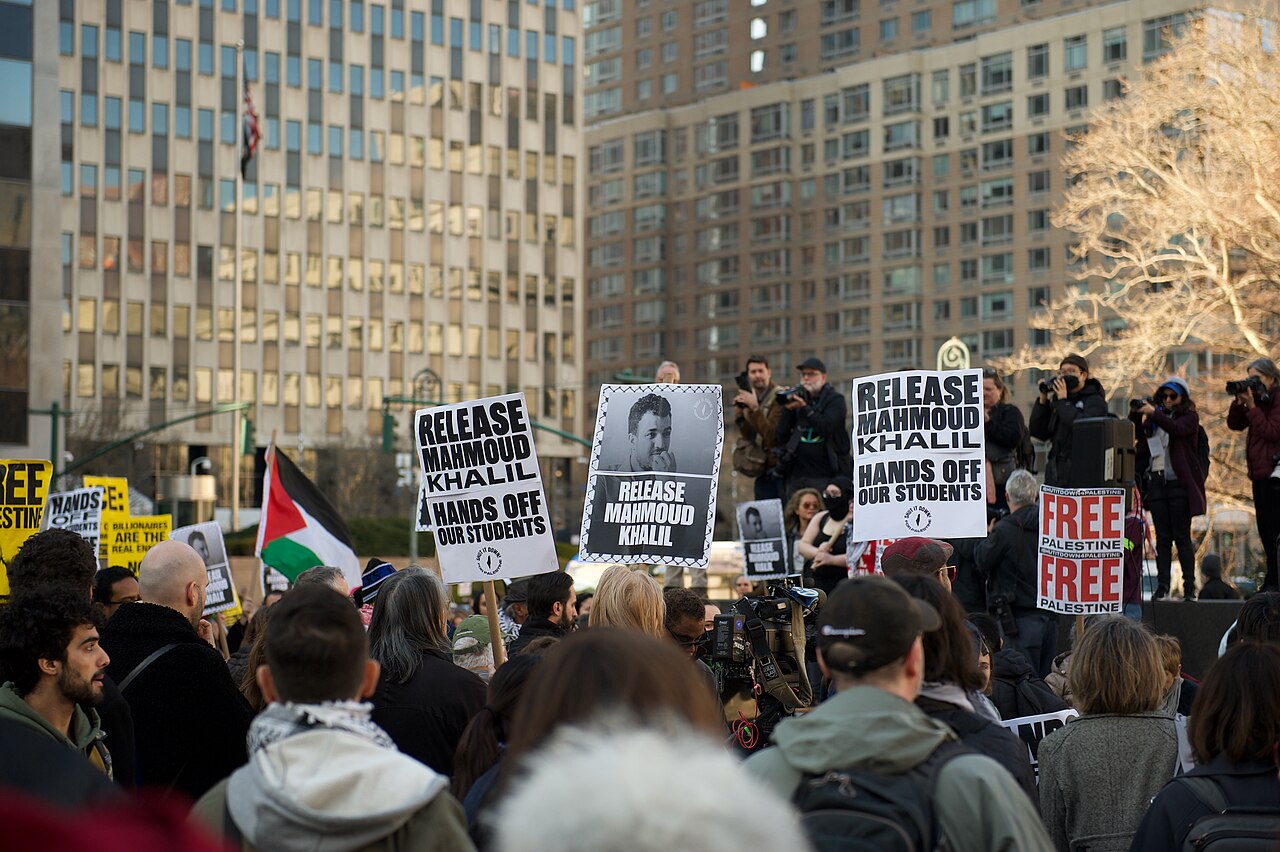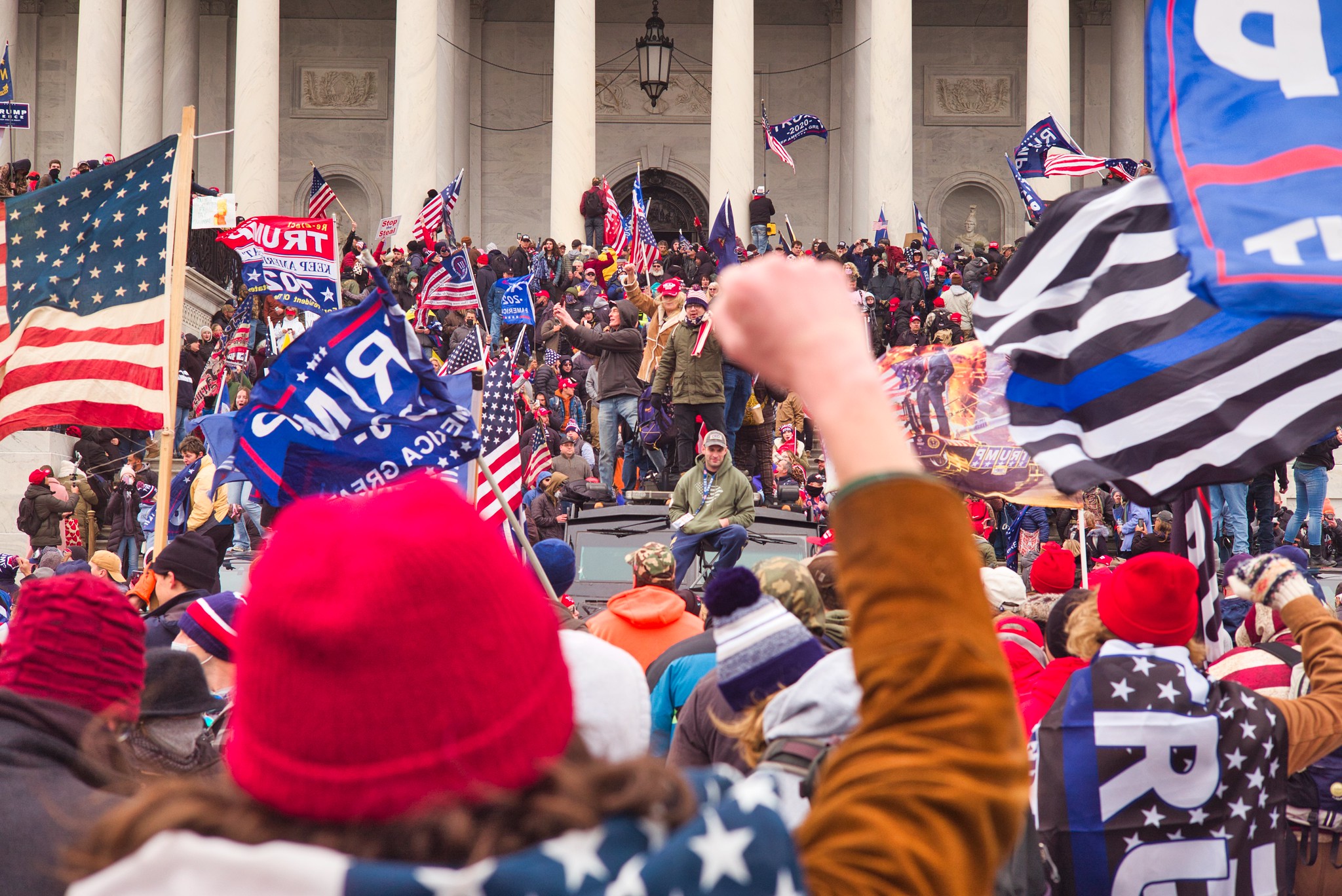The 2007 GTMO ‘Clean Team’ Interviews Fail in U.S. v. Nashiri

Published by The Lawfare Institute
in Cooperation With

After four years of being tortured by the CIA at various black sites, USS Cole bombing suspect Abd al-Rahim al-Nashiri was transferred to Guantanamo Bay in what the Bush administration hoped would be a new start for him and 13 other suspected terrorists. The transfer, made in 2006, followed the Supreme Court’s finding in Hamdan v. Rumsfeld that Geneva Convention protections apply to the suspected al-Qaeda operatives. As President George W. Bush framed it in a 2006 speech acknowledging the existence of the torture programs to the American public for the first time, the transfer was supposed to mark an end to the CIA-driven intelligence-gathering phase of the “war on terror” and the beginning of a justice-rendering phase through the Department of Defense.
After transferring the suspects to Guantanamo, the government shifted its focus from interrogation to prosecution. But prosecutors began to believe that whatever information had been collected through the CIA interrogation program would not be admissible at trial. So in 2007, a new team of investigators, called a “clean team,” was sent to the naval base to conduct new interviews in a process that, they hoped, could be used for prosecutions. A “clean team” interviewed Nashiri, among others.
Several years passed. Nashiri was ultimately charged with war crimes in 2011, facing the death penalty, and his case has been in pretrial proceedings ever since.
In 2022, Nashiri’s defense filed a motion to suppress certain self-incriminating statements he had made to the “clean team” on the grounds that they were still tainted by torture. The defense argued that the statements were inadmissible under a statutory prohibition on the use of evidence obtained through torture or cruel, inhuman, or degrading treatment (10 U.S.C. § 948r) and a Military Commission Rules of Evidence rule that allows commission judges to accept incriminating statements only if they are sufficiently attenuated from the effects of torture (M.C.R.E. 304). The government opposed, arguing that the 2007 statements to the “clean team” were admissible “because they were not obtained by torture or coercion and because the circumstances surrounding the making of those statements are sufficiently attenuated from the taint of the abuses inflicted upon [Nashiri] between 2002-2006.”
More than 15 years after the interviews, on Aug. 18 of this year, military commissions judge Lanny J. Acosta Jr. agreed with the defense. He issued a ruling that suppresses Nashiri’s self-incriminating confessions, finding that while they were not obtained through torture, they were still derived from it. In his ruling, Acosta finds that investigators, whether or not they knew it, “could not help but [have] benefit[ted]” from Nashiri’s torture by the CIA years before. He finds that Nashiri’s statements were products of a prior “contract” forged through torture that preconditioned his state of mind and that interviewers did not sufficiently break him out of before they interviewed him, neither through a legitimate rights advisement nor through a sufficient change in conditions at the naval base.
With this ruling, Acosta has held that an interview specifically designed to obtain from Nashiri information free from the taints of torture failed to do so in a way that would allow prosecutors to use the resulting evidence. A similar question was addressed back in 2018 in the 9/11 cases, when military commissions judge Col. James Pohl suppressed statements that Khalid Sheikh Mohammad and his co-defendants made to “clean team” investigators in 2007. (That was in the context of a discovery dispute, however, and not a suppression motion.)
Acosta’s 50-page ruling finds that Nashiri’s statements were still tainted by torture, even after a four-month lapse in torture tactics and even though the circumstances of the 2007 interview were quite different from those of his earlier interviews. Though prosecutors indicated they will appeal the decision, it could pave the way for parallel challenges from other Guantanamo detainees—challenges that could potentially destabilize prosecutors’ ability to use some of the strongest evidence they have for their cases and lengthen what has become a rather familiar purgatory for the remaining cases on the war on terror.
The “Contract” and the ‘Clean Team’ Interview
The findings of fact constitute close to half of Acosta’s 50-page opinion. Instead of simply acknowledging Nashiri’s torture between 2002 and 2006, he chooses to describe the contours of the CIA’s Rendition, Detention, and Interrogation (RDI) program starting in 2002. Acosta outlines the setup of the RDI program and the Bush Justice Department-approved enhanced interrogation techniques (EITs) that were developed by two staff psychologists from the U.S. Air Force Survival, Evasion, Resistance, and Escape School—whom Acosta notes were not trained interrogators—and used against the detainees. He notes that such tactics “do not elicit reliable information.” He highlights the story of Abu Zubaydah, the first detainee to be subjected to the EITs (and, though not specified in the opinion, whose drawings published by ProPublica gave the American public a visceral look into the kind of torture detainees endured at the hands of the CIA).
He then zooms in on Nashiri, considering his detention and torture at nine different sites before being transferred to Guantanamo in 2006. Nashiri was subjected to EITs at three of those sites (U.S. Detention Sites COBALT, GREEN, and BLUE) and at the rest experienced “living conditions which constituted cruel, inhumane, and degrading treatment” with the aim of gaining intelligence from him about prior and potential future attacks. Nashiri was subjected to techniques like rectal feeding, waterboarding, broomstick stress positions, hanging from the ceiling, nudity, power drill and gun threats, and more—all on top of consistent solitary confinement.
Acosta finds that such conditioning created a “contract” between Nashiri and interrogators—one that would create expectations for “hard times” (that is, a return to EITs) if Nashiri refused to cooperate with investigators’ demands for information. And Nashiri carried these expectations with him to Guantanamo Bay in 2006, according to Acosta. The “clean team” interview that resulted in Nashiri’s statements—which allegedly provided “extensive details” of Nashiri’s “direct involvement” in the planning of the USS Cole attack—occurred four months after the transfer, from Jan. 31 to Feb. 1, 2007. Acosta writes that the interview was conducted “for the goal of obtaining evidence for prosecution.” The interview was not recorded, and no transcript was made. Its contents are recorded only in a memo prepared by the interviewers. The “clean team” consisted of three agents from the FBI, Navy, and Air Force, none of whom had met with Nashiri before. (However, Acosta notes that Gaudin was a part of the first employments of the CIA’s EIT techniques in the case of Zubaydah.)
During the interview, Nashiri was “shackled to the floor, but his hands were free” and he “generally appeared to be in good spirits,” writes Acosta. The interrogators and Nashiri are reported to have shared tea and pastries during sessions, and he was permitted breaks during the approximately six-hour sessions.
According to Acosta, Nashiri was given the following information about his interview. First, agents told him that they “did not work for and were independent from any organization that previously held” him. Second, agents told him in multiple different ways that he was in the legal custody of the Department of Defense. Third, he was told that, while the agents were aware of prior statements he may have made (namely, while in CIA custody), they “were not interested” in them. They also told him that the statements he made to them now could be used in court.
But agents were advised not to give Nashiri a Miranda warning—not given to any detainees at the time—and were instructed to tell Nashiri that he wasn’t entitled to an attorney if he asked for one. (It’s not clear from Acosta’s opinion if Nashiri ever did ask for one.) The agents also did not tell Nashiri that prior statements he made while in CIA custody could not be used against him in court. They were also instructed to record on a computer separate from the one they were using to collect interview notes any allegations Nashiri made about the CIA torture he had endured prior to his transfer to Guantanamo. (He did make them.)
The Voluntariness Test
Acosta begins his legal analysis by reviewing the spirit behind the prohibition against using torture-obtained evidence to prosecute Guantanamo detainees, which is the product of an understanding that statements derived from torture cannot be “premises used in civilized societies from which a civilized forum will infer guilt” (Lyons v. Oklahoma, 1944). He walks through the court’s obligation to, when faced with allegedly coerced statements, “enforce[] the strongly felt attitude of our society that important human values are sacrificed where an agency of the government, in the course of securing a conviction, wrings a confession out of an accused against his will” (articulated first in Blackburn v. Alabama, 1960). He also notes that because Nashiri had been subjected to torture that resulted in numerous incriminating statements, any subsequent statements are presumptively tainted.
With this foundation, Acosta turns to two cases in which the Supreme Court examined the question of whether a later confession could be voluntary if it were given after an initial interview in which a confession had been coerced: Lyons and Oregon v. Elstad (1984). In Lyons, the Supreme Court ruled that voluntariness could be established if the suspect had “mental freedom” (citing Ashcraft v. Tennessee, 1944) at the time of the subsequent, noncoerced confession. Although a previous coerced confession would not always prohibit the admissibility of a later, noncoerced confession, the “effect of earlier abuse” must be considered in evaluating whether that later confession was truly voluntary. In Elstad, the initial confession had not been physically coerced but had been given without a prior Miranda warning. There, the Court held that a second confession was admissible because it was voluntarily made after a proper rights advisement.
Acosta then turns to the issue at hand: whether Nashiri’s 2007 statements to the “clean team” must be suppressed. He references a multifactor test established by the Supreme Court in Elstad and set forth in M.C.R.E. 304(a)(4), which requires the judge to consider (a) how the statement was taken; (b) the characteristics of the suspect; and (c) the lapse in time, difference in place, and difference in identity of the questioners. On the whole, this multifactor inquiry is meant to address “whether there has been a sufficient break in the stream of events separating the coercion from the statement,” such that the statements could be seen as voluntarily given.
Acosta reasons that the four months between Nashiri’s torture and his “clean team” interview, while not a short amount of time, is still eclipsed by the amount of time he spent being tortured at the CIA black sites. Such conditions would have made it difficult for Nashiri to know whether he would be subjected to torture by the “clean team”—whether the interrogators who had put him through EITs were watching the interviews nearby and ready to intervene with abuse. In Acosta’s words:
He had no reason to doubt that he might, without notice, suddenly be shipped back to a dungeon like the ones he had experienced before. He had no real reason to know whether [a CIA officer] lurked nearby with a pistol, a drill, or a broomstick in hand in the event he chose to remain silent or to offer versions of events that differed from what he told his prior interrogators.
Acosta then examines the circumstances under which the 2007 statements were made. He finds that the conditions at Guantanamo “improved only incrementally” and notes that Nashiri was, even after his transfer to Defense Department custody, held at the very sites where he had been subjected to rectal feeding between 2002 and 2006. Acosta writes that Nashiri was still “under the complete domination and control of his captors,” pointing to the forced cell extractions and grooming that Nashiri experienced at Guantanamo. Acosta reasons that these facts make it difficult to believe that Nashiri wouldn’t have thought the “contract” conditions still existed by the beginning of the January and February interviews. In other words, there was not a sufficient break between his torture and the circumstances under which he made the 2007 statements.
Acosta then addresses the “clean team” effort to obtain admissible statements by giving Nashiri a modified rights advisement like the one many others interviewed at Guantanamo during this time received—one that was less than a full Miranda in order to, according to Acosta, “increase the likelihood of obtaining incriminating information.” They told Nashiri that they “did not work for and were independent from” the organization that previously held him (only technically true) and that he was now under Defense Department custody—even though the detainees at Guantanamo were still under the “operational control of the CIA” at the time. Acosta describes this as rights advisement that didn’t rise to the level of coercion but still left Nashiri “in the dark in several important respects.” He thinks it’s not surprising that, given that he had already incriminated himself while in CIA custody, Nashiri would have “gamble[d]” in this moment to just cooperate with officials in spite of such a rights advisement.
The government had pointed to precedents set in United States v. Elsheikh (2022) and United States v. Khweis (2020) to argue that the military commission could keep the statements in spite of a flawed rights advisement. But Acosta finds that Nashiri’s situation was sufficiently different from the facts of those cases: The individuals in Elsheikh and Khweis were given more elements of a Miranda warning than Nashiri (they were advised of their rights to remain silent and to consult with an attorney); they weren’t subjected to the kinds of torture that Nashiri had been subjected to; and they hadn’t been held for “four years, incommunicado, in what amounted to solitary confinement.” Moreover, Acosta notes that given that the Military Commissions Act was updated only in 2009 to expressly prohibit the admissability of torture-obtained statements, controlling law in 2007 would have in fact left open the possibility that the torture-obtained statements would have been admissible in trial. That for Acosta means that the rights advisement was “drafted with the specific intent to leave an open question as to the admission of involuntary statements,” contributing to a totality of circumstances in which Nashiri would have had no reason to believe that his prior incriminating statements in CIA custody wouldn’t be used against him—begging the question of why he would say anything different to investigators in 2007.
Finally, Acosta points out an additional temporal question that complicates whether the January and February 2007 statements were voluntary. Acosta finds that, by the third day of interviews, Nashiri had become aware that he would not face consequences if he didn’t comply with the questioning: Nashiri is noted as having told interrogators that he no longer wanted to speak with them. The government pointed to this as proof that the interview was voluntary all along. But because the interviews weren’t recorded and because the memo prepared by agents doesn’t specify when certain admissions were made, Acosta finds that the commission cannot assume that Nashiri’s statements about his role in planning the USS Cole bombing were made after his demonstrated realization about his ability to participate or not in the interviews. He further points to statements Nashiri made in March 2007 at Guantanamo during a Combatant Status Review Tribunal, in which he denied playing a role in the USS Cole bombing or being a member of al-Qaeda. Acosta reasons that this incident further indicates that Nashiri came to understand that he need not make self-incriminating statements. (But for this same reason, Acosta declined to suppress the statements that Nashiri gave in the March 2007 interview, as was requested by the defense in this same motion.)
In sum, Acosta states: “The Commission is not convinced that the 2007 statements would have been obtained if not for the Accused’s prior experience with being tortured and abused in the RDI program.”
Nashiri Suppression Ruling in Context
According to former chief military commissions judge Morris Davis, who oversaw the commissions from 2007 to 2009, Bush administration officials made the decision to create “clean teams” after much discussion, but the “collective belief” was that they “did not have much to lose by trying” given the likely inadmissibility of the statements made in CIA custody. He defended the prosecutorial strategy to form a “clean team” in a 2009 retrospective published after he resigned from the commissions. But he was unsure at the time whether the separation would prove to be enough to be sufficiently attenuated from torture:
I believe the decision to create the clean teams and attempt to separate the law enforcement effort from the earlier intelligence collection phase was sound. Will it prove to be a positive factor in eventually bringing these alleged terrorists to justice? That remains to be seen. Admittedly, there is some logic to the argument that you cannot un-ring the torture and mal-treatment bell after it chimes, but perhaps with enough time and distance, and a good faith effort to treat the detainees humanely, you can demonstrate that the ill effects were overcome and the subsequent admissions were voluntary and reliable.
In Nashiri’s case, Acosta effectively found that the torture bell could not be unrung; even his “clean team” interview could not secure admissible statements.
It won’t be lost on Guantanamo watchers that the Biden Justice Department’s last battle about torture evidence admissibility was prompted by a prior ruling from Acosta in this very same detainee’s case. In that opinion, Acosta had ruled to allow prosecutors to use actual torture-obtained evidence from Nashiri and others in pretrial motions, interpreting § 948r(a) to apply only at the trial stage. It resulted in the Justice Department’s reinterpretation of § 948r(a) in 2022, in which the government stated that its position is to not seek to admit “at any stage of the proceedings … any of [Nashiri’s] statements while he was in CIA custody.” The case was then mooted, and there was no binding precedent left by the D.C. Circuit, leaving the onus of executing this stated position on the government.
While this Aug. 18 ruling is about a different kind of torture taint—torture-derived as opposed to torture-obtained—the appeal, which prosecutors said on Aug. 23 is coming to the U.S. Court of Military Commission Review, will put the government in the position once again of trying to split hairs about what statements can be used in prosecuting detainees who have been subjected to torture.
Acknowledging the magnitude of his decision to exclude these statements in Nashiri’s case, Acosta notes that his finding—incidentally, his last one for this case, prior to his anticipated retirement in September—“is not without societal costs.” But, he writes, “[p]ermitting admission of this evidence would greatly undermine the actual and apparent fairness of the criminal proceeding against the Accused in this case and infect the trial with unfairness sufficient to make any resulting conviction a denial of whatever process is due.”
“Whatever process is due” is the live question.




.jpg?sfvrsn=d5e57b75_7)
